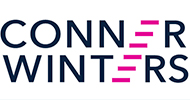|
||||||||

|
||||||||
Capital Gain Deferrals and Reductions Provided by the Tax Cuts and Jobs Act of 2017 |
||||||||
|
Recently released regulations have shed more light on an especially favorable new section of the Internal Revenue Code that was created under the Tax Cuts and Jobs Act of 2017. Internal Revenue Code (“IRC”) Section 1400Z, which created Qualified Opportunity Funds (“QOF”), offers an unprecedented opportunity to defer capital gain on the sale of capital assets and the potential to exclude all gain recognized from the disposition of a QOF investment. Three tax incentives were created: deferral of capital gain, partial exclusion of that capital gain, and the potential for 100% exclusion of the gain recognized when selling the investment in the QOF. A taxpayer can invest the unrealized capital gain from the sale of any capital asset such as stock, a partnership interest, or real estate, in a QOF by purchasing an equity interest (partnership interest or stock) of a QOF. Unlike an IRC Section 1031 exchange, only the unrealized gain, and not the full sale proceeds, must be invested in a QOF to qualify for deferral. The gain is deferred until the earlier of the disposition of the QOF interest or December 31, 2026. If the investment in the QOF is held for more than five years, only 90% of the deferred gain is taxed, and if it is held for more than seven years, only 85% of the deferred gain is taxed. In addition, if the QOF interest is held for ten years or more, the basis of the taxpayer’s QOF interest is equal to its fair market value, so a taxpayer recognizes no gain on the disposition of the QOF interest. To maximize the tax incentives, it is best to invest in a QOF by December 31, 2019. It is important to note that if the investment in the QOF is not funded with capital gain and is instead funded with post-tax dollars, that investment will not be eligible for the basis-step up at the end of the ten year holding period and therefore will not enjoy the tax benefits of the QOF incentive. A QOF is an entity organized as either a corporation or partnership for the purpose of investing in Qualified Opportunity Zone Property (“QOZP”). If an entity is qualified, the entity self-certifies to become a QOF by completing and filing Form 8996 with their federal income tax return. An entity is eligible to self-certify as a QOF by meeting the assets test: 90% of the entity’s assets must be QOZP, which is determined by the average of the percentage of assets held on the last day of the first six month period of the fund’s taxable year and the last day of the fund’s taxable year. Failure to meet the asset test will result in a penalty. Certain businesses are excluded from eligibility for QOZP status including: golf courses, country clubs, massage parlors, tanning facilities, race tracks, gambling facilities, and liquor stores. Qualified Opportunity Zone Business Property (“QOZBP”) is tangible property that is used in a trade or business that is acquired after December 31, 2017. Substantially all of the property in a QOF must be QOZBP. QOFs will be able to participate in commercial real estate development and renovation and opening and/or expanding businesses into the Opportunity Zones. For real estate investments, the property must be “substantially improved” within thirty months of acquisition. “Substantial improvement” means improvements that are worth at least as much as the tax basis of the QOZ property when acquired (not including basis in the land). |
Amanda M. Swain’s practice includes federal and state income tax planning for individuals and business entities; estate planning; asset protection planning; sophisticated wealth transfer tax planning; tax structuring of business transactions including mergers and acquisitions; charitable organizations; business succession planning; and representing clients involved in tax controversy matters with the Internal Revenue Service and Oklahoma Tax Commission.
This news alert should not be construed as legal advice and its receipt does not create an attorney-client relationship.
|
|||||||
| Subscribe | Unsubscribe | ||||||||
